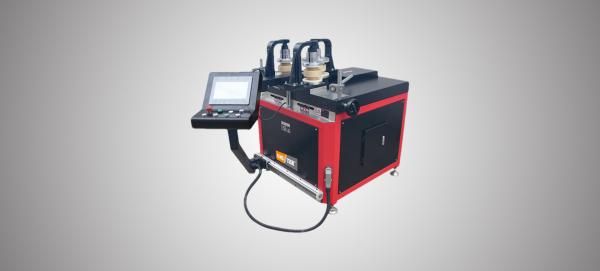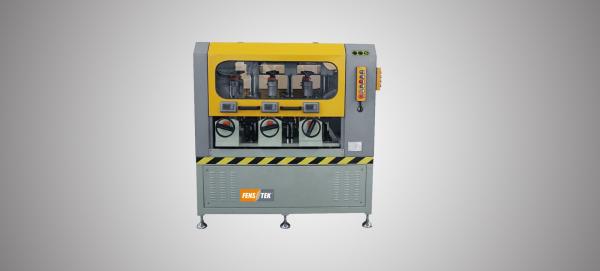KCJ-01
Knurling Machine For Aluminium Window Processing
The KCJ-01 Knurling Machine is purpose-built for high-precision knurling operations on broken bridge aluminium profiles used in thermal break window and door systems. This advanced model features a fully electronically controlled knurling lift mechanism for swift and stable profile adjustments, reducing downtime and enhancing production efficiency. With integrated wear-through functionality and linear guidance, it delivers consistent knurling results while ensuring profile integrity and operational safety.
Specialised for Thermal Break Aluminium – Designed specifically for broken bridge aluminium window and door profiles.
Electronic Lift-Controlled Knurling – Domestic-first design offering fully electronic lift adjustment of knurling heads; no need for repositioning during profile changeover.
Wear-Through Function – Equipped with a plastic stent and wear-through mechanism, enabling simultaneous knurling and protective film application.
Dual Knurling Control – Two knurling heads can be synchronously adjusted electronically or individually fine-tuned manually for maximum flexibility.
Enhanced Stability and Smooth Operation – Fitted with domestic round linear guide rails and Schneider electrical components to ensure consistent and vibration-free knurling.
Semi-Adjustable Lower Roller – The lower wheel can be manually adjusted to accommodate different profile thicknesses with ease.
| Specification | Details |
|---|---|
| Power Supply | 380V / 50Hz |
| Total Power | 1.68 kW |
| Knurling Wheel Diameter | 80 mm |
| Knurling Wheel Regulating Range (Horizontal) | 250 mm |
| Knurling Wheel Regulating Range (Vertical) | 210 mm |
| Air Pressure Supplied | 0.6 – 0.8 MPa |
| Knurling Speed | 0 – 90 m/min |
| Overall Dimension (L×W×H) | 1100 × 900 × 1580 mm |
| Weight | 600 kg |
Experience the KCJ-01 in Action
Enhance bonding strength with the KCJ-01 – the knurling machine designed for aluminium window profiles. Precision-engineered to create accurate, uniform knurled surfaces, it ensures better adhesion and seamless integration during thermal break assembly.


